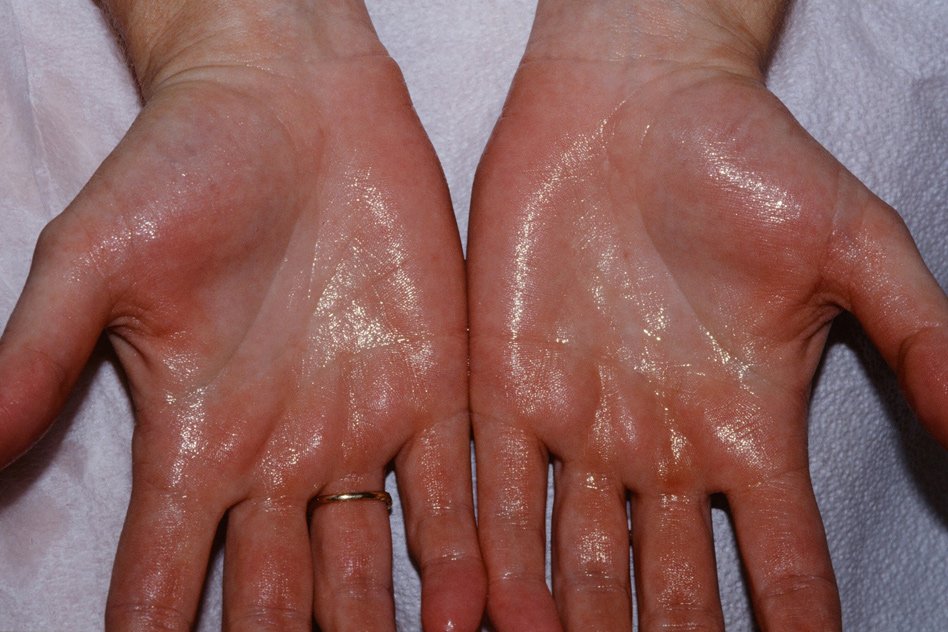Image Source: regionalderm
Hyperhidrosis refers to excessive sweating, even under basal conditions. It is physiologically normal and healthy for us to sweat under conditions of high temperature or humidity, during exercise, or when anxious. Sweating is the body’s way of coping with stress and cooling the skin surface. The sympathetic component of the autonomous nervous system causes an increase in secretions of the sweat glands. However, some individuals experience an increase in sweat production even in the absence of any factors to trigger the same. This is what we call hyperhidrosis.
What causes hyperhidrosis?
There are two broad categories:
1. Primary hyperhidrosis wherein no underlying cause can be identified
2. Secondary hyperhidrosis which occurs as a complication, or as a consequence of underlying causes like diabetes, menopause (hot flushes), low blood glucose, hyperthyroidism, and sympathetic overactivity (nervous pathology).
What are the symptoms?
The individual notices an increase in sweating without any physical or mental stress and under a comfortable temperature.
It may be noticed in the form of drenched clothes or clamminess of the skin.
Common sites of increased sweating are:
– armpits
– face
– palms and soles
– groin
At times, the extent may be such that it interferes with the individual’s profession. Work involving fine control may be hampered.
A physician can be consulted whenever the symptoms and discomfort are experienced.
People with hyperhidrosis often have a layer of sweat over the skin, this creates moist, favourable conditions for disease causing organisms to grow, thus leading to recurrent skin infection.
How can it be treated?
Once the underlying agent, if any, has been treated, treatment for hyperhidrosis can be started.
Various treatment options are
– prescription antiperspirants with aluminum chloride
– nerve blocking drugs which inhibit the action of the nerve impulses on the sweat glands.
The drugs may have side effects, and should be used only on prescription by a registered practitioner.
Surgical options include
– iontophoresis (use of low level electric currents)
– sweat gland removal
– nerve surgery
Home remedies:
-Use of non-prescription antiperspirants.
-Regular bathing.
-Wearing clothes made of natural fabric like cotton, wool and silk. This allows the skin to get aired, aiding evaporation, and thus reducing the amount of sweat.
-Shoes should be rotated daily. Also, socks should be regularly changed. Our feet do not receive adequate aeration, and so, may be prone to increased sweating and, subsequently, infection. At home, it is advisable to sit barefoot to air the feet.
-Relaxation techniques like meditation and yoga help reduce stress and, may help reduce sweat secretion.











